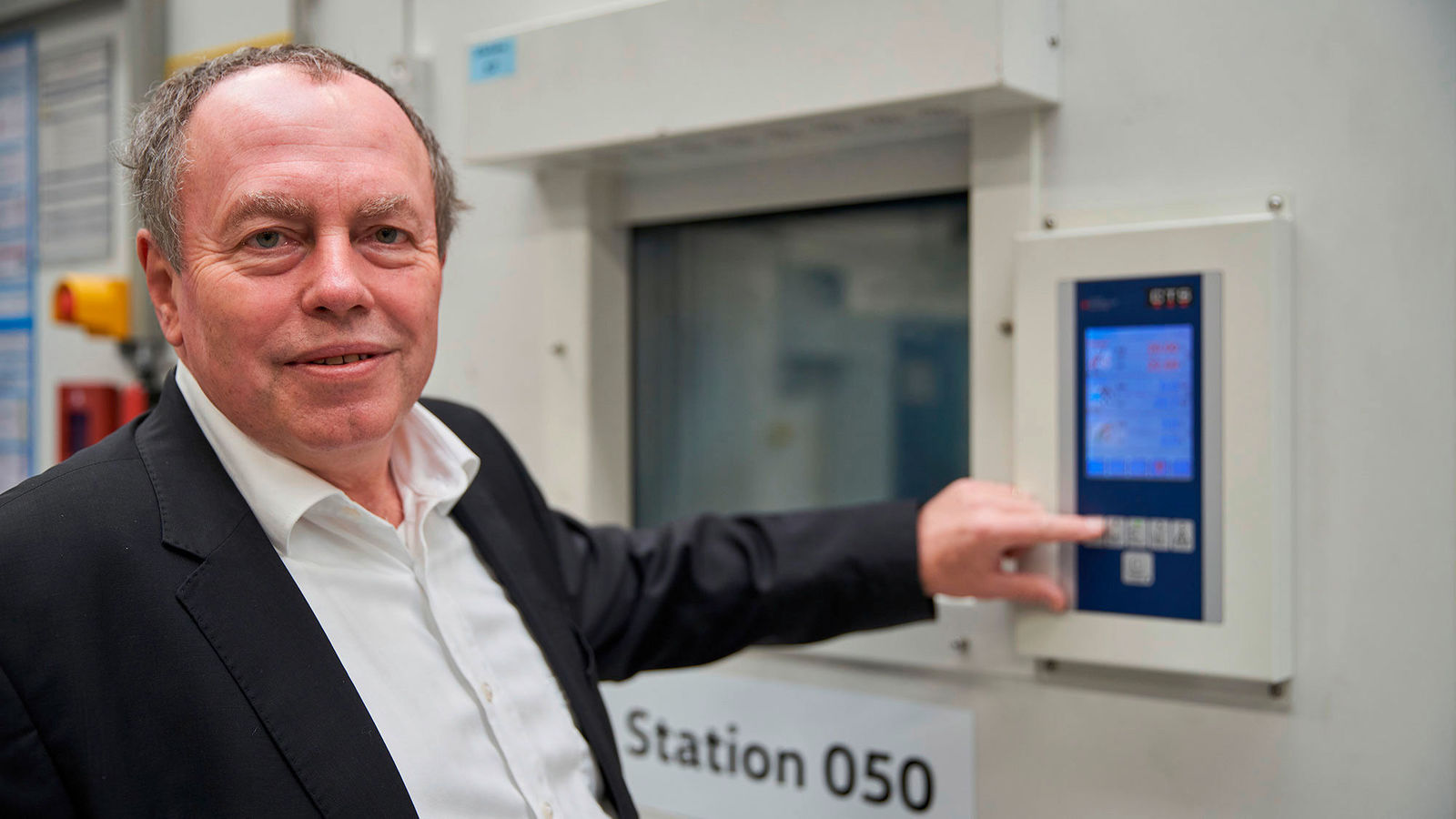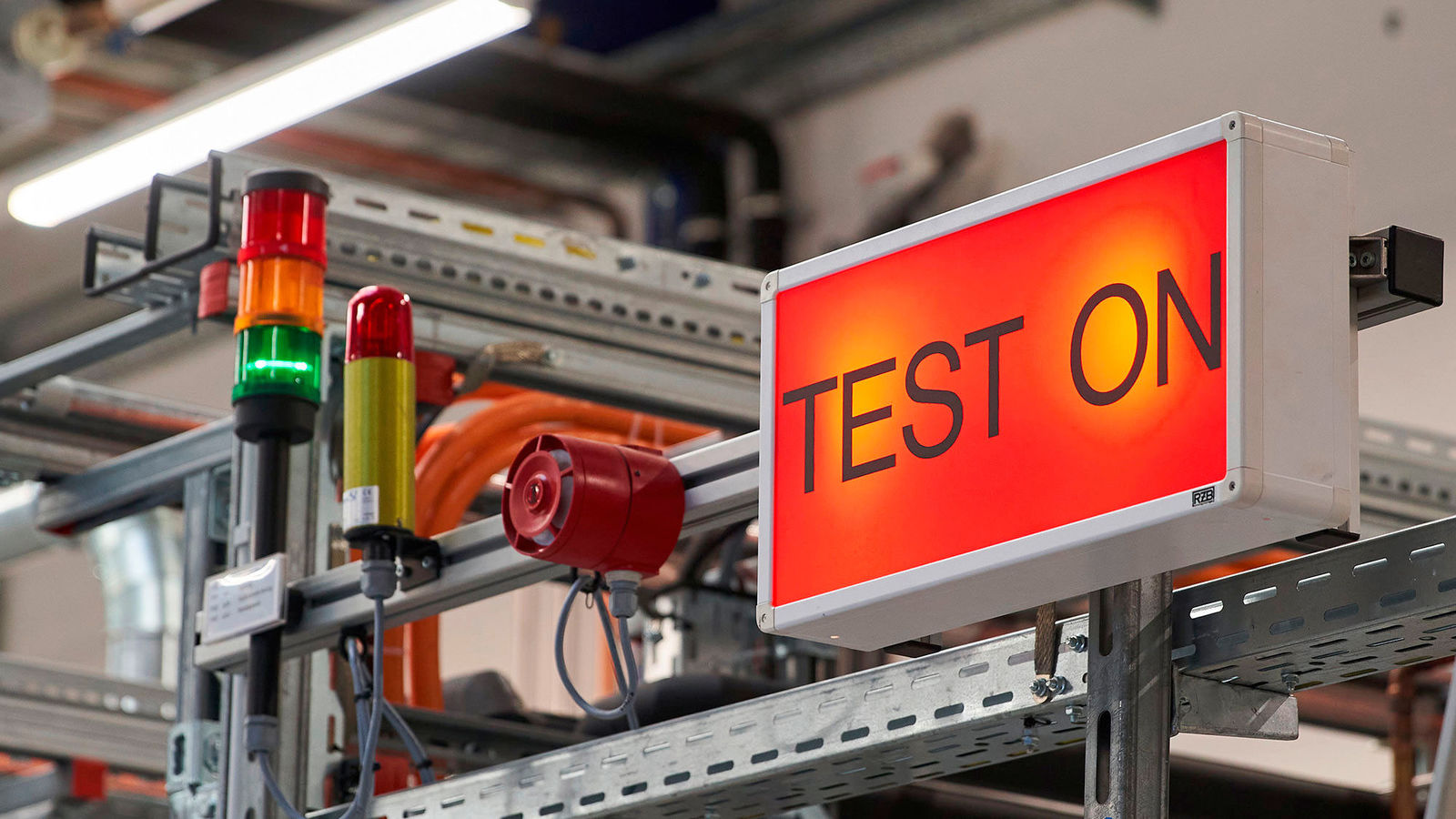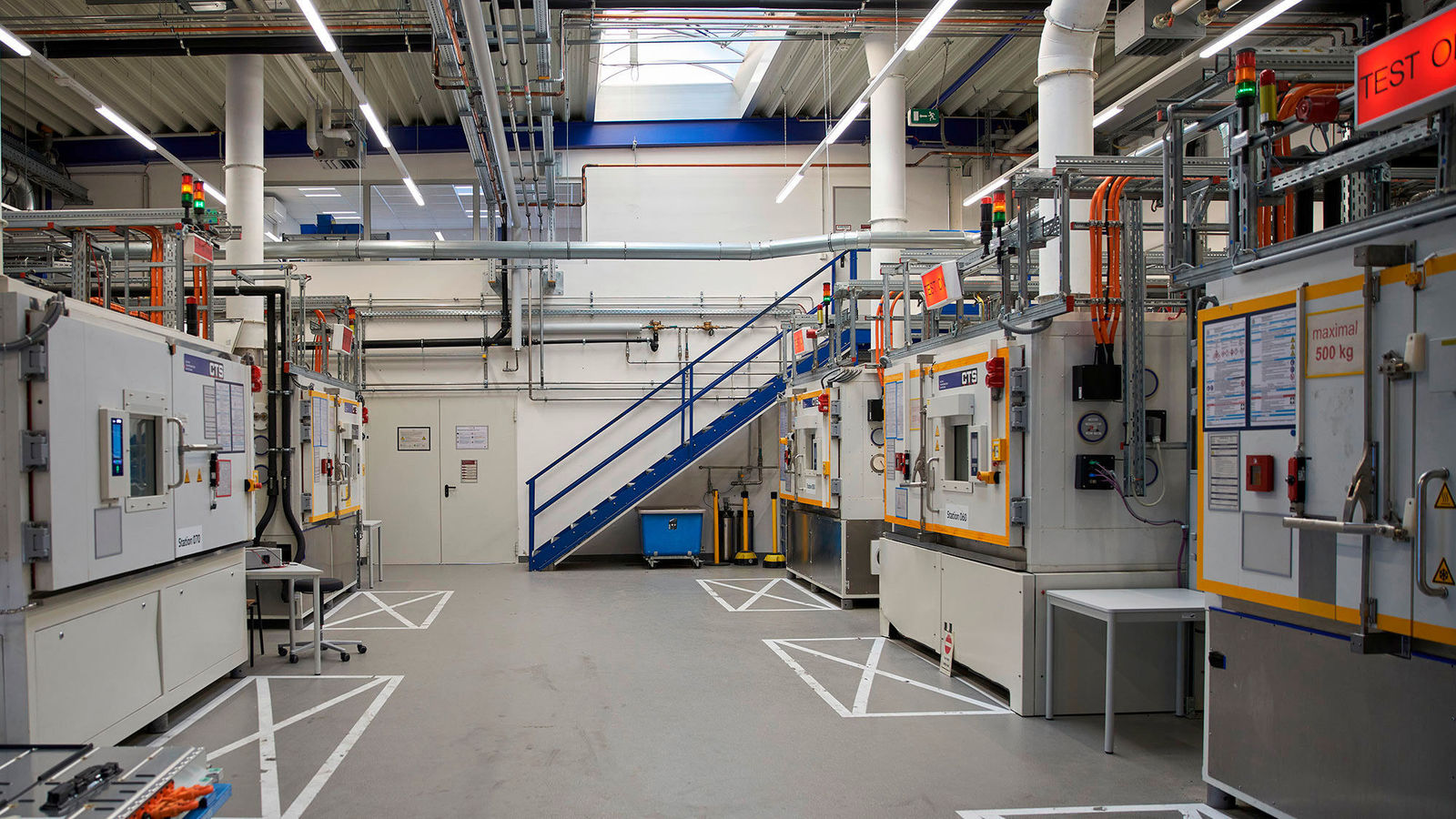How are battery systems tested at Volkswagen?
At the Battery Development Center in Brunswick, we test almost every conceivable case that could affect the battery system during a car’s operating life – from accidents to extreme temperatures. The safety of drivers is the most important thing for us. That is why every variant of the battery, including the software, has to prove its safety in more than 5,000 individual tests.
What exactly are you investigating?
Life cycle tests are an important area: We subject the battery systems to stresses in mechanical shocks such as those caused by curbs, railroad crossings or stone chippings. In a two-week vibration test, we simulate the complete life cycle of a vehicle. In other tests, the battery has to withstand thermal shock immersion, such as can occur when driving through cold water. In electric battery test rigs, we test battery systems under different climatic conditions – temperature and humidity – with required charging and discharging currents. At the end, we disassemble each battery system and check its condition.
What is the division of labor within the Group?
In addition to our system tests in Brunswick, there are other tests sites in the company: The Center of Excellence in Salzgitter tests the quality of the battery cells, and Technical Development in Wolfsburg tests the cell modules. This is how we ensure, for example, that each battery can actually achieve the maximum range. The software and control units are tested automatically on so-called hardware-in-loop test benches for functionality, safety, reliability and smooth interaction. And in battery production, the functionality and safety of each battery is checked before it is delivered to the vehicle plant.


